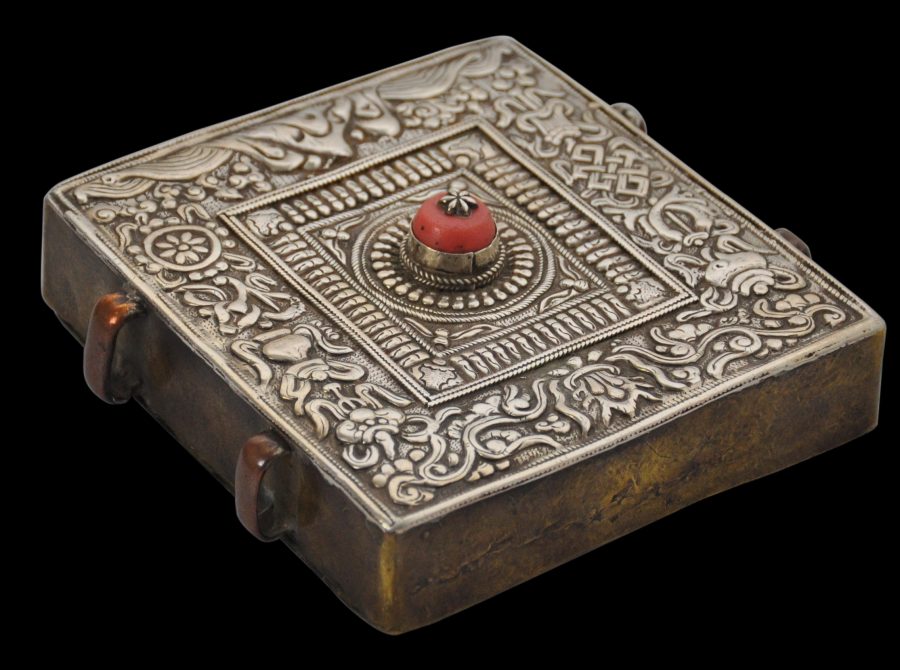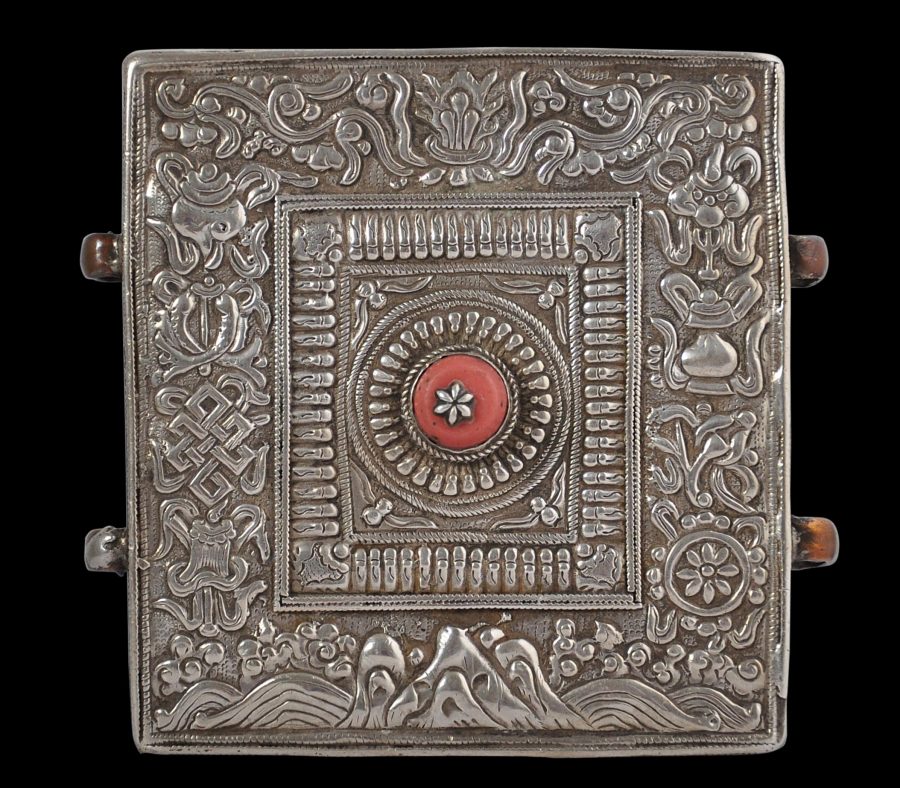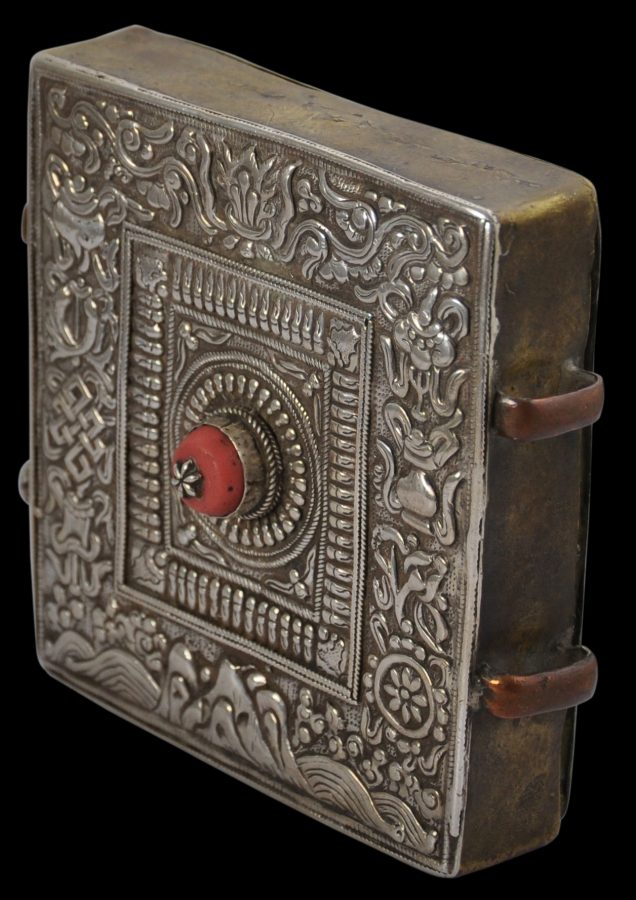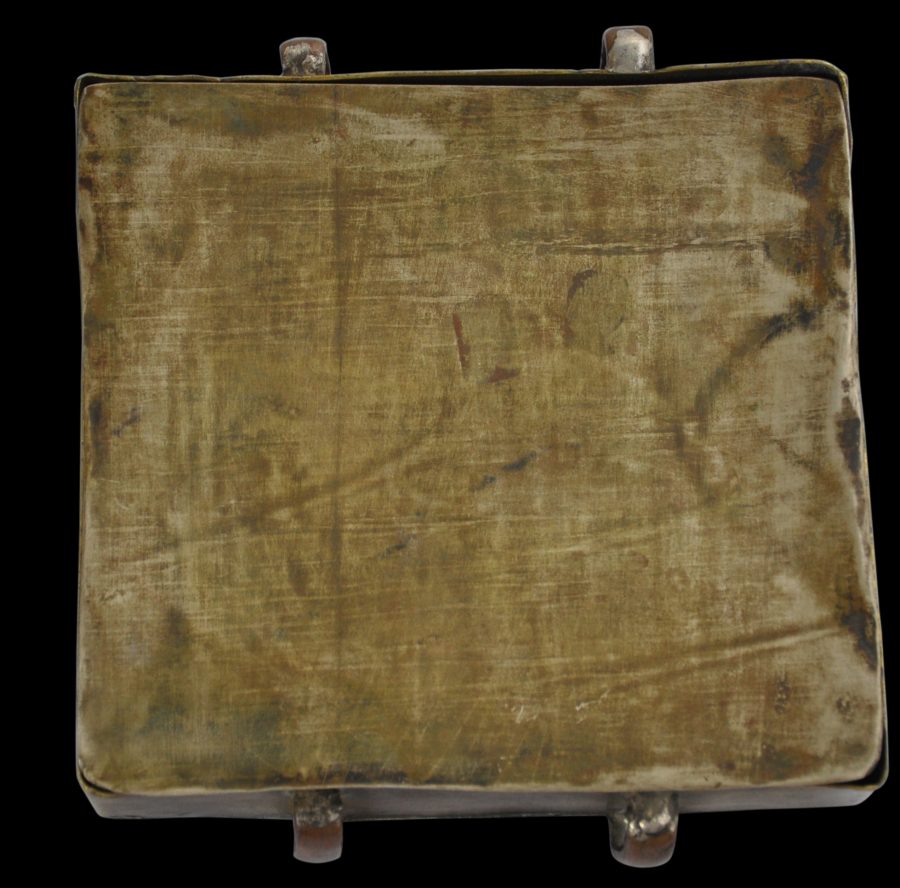This ga’u box would have been women by both men and women. It is of square form, and has a chased frontal plate of solid silver. The sides and backing plate are of silvered copper sheet.
Two pairs of lugs on either side allowed the box to be attached to a belt or to clothing.
The front plate is decorated on each side with the eight auspicious Buddhistic symbols of good fortune (a parasol, a lotus, a pair of fish, a treasure vase, a conch shell, an endless knot, the banner of victory and a golden wheel). The top is decorated with a triratna (‘Three Jewels’), and the lower register fittingly is decorated with a landscape of mountainous peaks.
The centre of the front plate is set with a large central coral cabochon in a raised silver box-setting and surmounted by a small silver floral stud.
The ga’u is in excellent condition. The silvering to the sides and back is worn (as it should be). Overall, it has obvious age and a fine patina.
Such ga’us were worn by Tibetans on journeys as talismanic or protective devices. As well as containing a small clay image of a deity (a tsha-tsha), they often contained an assortment of other items deemed to have protective value, including small pieces of paper inscribed with Tibetan mantras, small seashells and so on.
References
Beer, R., The Encyclopedia of Tibetan Symbols and Motifs, Serindia, 2004.
Proser, A., (ed.), Pilgrimage and Buddhist Art, Asia Society Museum/Yale University Press, 2010.





